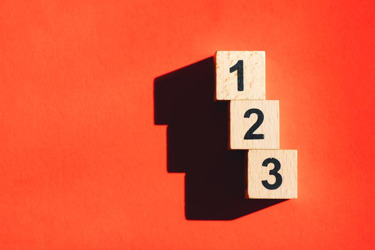Teamwork Makes The Dream Work: The 3 Phases Of A Strong Email Strategy
By Bea Tejedor, Pathwire

It takes “all kinds of kinds” to develop a strong and effective email campaign today. All roles within the email team—the strategist, designer, copywriter, developer, and data engineer—are integral to its success. Especially as email becomes more complex with heightened personalization, interactive content, and responsive designs, it’s important to build a strong team to direct these campaigns.
An email team is strongest when all of these roles are equally fulfilled. In other words, if the copywriting is great but the strategy is lacking, for example, the campaign will underperform. All five of these jobs play a unique role in three distinct phases that form what we can call the “Email Team Cycle.” Picture a continuous flow of communication between the different roles that pushes an email campaign along from one phase to the next and then feeds information back around again.

Stage 1: Strategize
The first part of the cycle is strategy which is, of course, managed by the email team strategist. This step involves assessing past campaigns and then developing a new plan based on that information and feedback. It’s critical to assess and adapt at the start of each effort, even on the smallest projects. Assessing results and data from past projects will help deliver insight on both the audience and the content. Ask questions that analyze the delivery rate, bounce rate, block rate, and any other recipient feedback so that future emails have a better chance at making it to the inbox rather than the spam folder. And regarding content, it’s important to analyze the success rates of the campaign elements based on things like subject line, images, and segment performance. Data is everything in the strategy phase.
Another key element of this phase is the development of a campaign strategy for future work. As with any project, it’s best to focus on defining objectives, SMART goals, and plans to execute. While the email strategist’s role is crucial throughout all three phases, this is their time to shine. They are the ones responsible for developing the overall email strategy, using data from past email campaigns and other knowledge about the target audience. A strong email strategist will pull in expert advice from across the organization—including members of their email team and the larger marketing team—to better understand how email fits into the bigger picture.
Stage 2: Create
Now that the rest of the team has a clear understanding of goals, it can begin working its magic, too. This is where the copywriters, designers, and developers are pulled in to establish the look and feel, fine-tune the copy, and write the code that will lead to the end product.
Layout dictates how the copy and code are both written, and it also drives engagement with the audience, so it is best that designers set the stage up front by selecting or designing the best layout for either a template or one-off email. The design of the email—whether educational or promotional—should consider the images, information, and CTA that will need to be included and present them most engagingly. For example, promotional emails should link to purchasing pages whereas educational emails will be more text-based.
Up next are the copywriters, who will ensure that the message delights and inspires enough to lead to engagement. The copywriter will work with the strategist and data engineer to understand which message is most likely to convert, which CTA leads to the most clicks, and where it makes sense to utilize personalization and segmentation opportunities.
Email developers should also be working in unison with the designers and the copywriters in this stage to weave in unique design elements—like GIFs, interactive imagery, or countdown timers—that require custom code.
Stage 3: Optimize
The third and final stage is about optimizing the email campaign and contact lists. In this stage, the data engineer and email developer will work alongside the email strategist to integrate CRM, test & validate, approve & send the final email. First, the team will identify and implement segmentation opportunities, ensure CRM is integrated with the chosen email platform, and validate data integrity and personalization. Next, the team will focus on bringing the campaign to a conclusion by pulling in additional team members (copywriters, designers, and strategists) to complete things like reviewing the final copy and design, testing the variables, and confirming that the correct A/B tests are being used.
Finally, it’s time for one person—typically the email strategists—to approve and send the email or publish the template. Having one person responsible for catching typos or flaws in code, copy or design will reduce the likelihood of errors.
Once the email is optimized and sent, the data strategist can then circle back to stage 1 to review the performance of the email and consider opportunities to improve and adapt for future campaigns.
A Strong Email Strategy Takes The Whole Team
The strategist, designer, copywriters, developer, and data engineer all play an integral role in reaching “all kinds of kinds” of customers. Even as emails grow in complexity and intricacy, a strong email marketing team can perfect the email team cycle to deliver strong and impactful emails every time. By strategizing, creating, and optimizing correctly, an email marketing team can cut through the noise of even the busiest of inboxes.
About The Author
Bea Tejedor is head of content at Pathwire.
